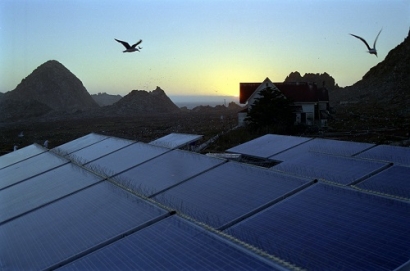
State regulations that require utility companies to increase their percentage of renewably sourced energy by a specified date and amount have been adopted in some capacity by 30 states. The design of the policy plays a key role in whether the mandate will promote development. Notable resistance to such policy enactment has stemmed from the Southeast and portions of the Great Plains where the cost of fossil fuels is lower. As Professor Carley states in her interview with UtahBusiness.com, “the role of state-level policy tools…take on increasing importance” in such a turbulent national political climate.
These findings will be useful in both future policy discussion as well as during the due diligence phase of potential new renewable projects. The article emphasizes the importance of thoughtful policy design and strategic plan implementation in assuring the success of a large-scale renewable project. However, legislation is only the first step in a long process that requires several components for renewable energy projects to come together.
As more states across the US slowly adopt renewable mandates, this positive correlation between more stringent policies and renewable energy development is good news for the industry, but by no means does it make project approval a given. As anyone who has been involved in a renewable energy project undoubtedly knows, there are still obstacles to overcome as a result of the detriment that public opposition can bring to a renewable project’s budget and timeline. A governmental demand for an increased renewable energy presence should help alleviate some opposition to large scale projects but, despite these new findings, ground-level resistance to large scale developments is likely to arise. Here are suggestions to help ensure the supportive voice is the strongest voice within the community.
Stringent Policy Implementation
While referencing policy design, the researcher found “stringency is critical. The stronger the mandate, the more renewables a state develops.” The same advice can be applied to planning and executing an effort to gain community support for a renewable project. Conducting outreach commands goodwill from the community by increasing transparency with respect to project intentions while simultaneously educating the public on the project’s benefits. A community that is educated on the proposal is a solid foundation upon which to ask supporters to take action in favor of the project.
Leveraging Social Media
Launching social media accounts devoted to a new renewable project allows the community quick access to facts, graphics, and answers to frequently asked questions. Utilizing the internet is an efficient way to identify and contact supporters while also keeping various stakeholders informed. It is important to establish an online presence in a timely manner in order to control the message rather than be forced to react once opposition arises.
Budget-friendly Advertising
Once information about a project is accessible online, paid digital ads help to drive members of the community to these resources. If social media and a website are created to keep the community informed, residents need to know these platforms exist. Paid digital ads help this process along and encourage digital users to click right through to land on the project site. These are cost-effective because of the ability to target key geographic and demographic groups, and in many cases, you only pay for action taken (i.e. clicks, engagements, impressions and so on). Reaching people as they browse social media or various websites is an effective way to engage new residents and help them learn more.
Stakeholder Engagement
It is imperative to establish relationships with stakeholders during the early stages of a proposal. Actively engaging with community groups and leaders will increase the number of residents reached in a meaningful way. While civic groups might not endorse a renewable project, group meetings are helpful to encourage involvement and discussion as local officials like projects that involve community outreach. Encourage stakeholders to help promote your message through newsletters, email blasts, social media, or events.
Utilize Direct Mail
Direct mail is still cost effective when targeting key political districts or demographics. For example, once supporters are identified, send postcard reminders of important dates for hearings and ways to provide vocal support. For those who have not yet taken a stance on the issue, a direct mailer that debunks myths can help nudge support. Ultimately, any outreach should provide residents with a way to give feedback, and this feedback should be recorded and coded into a database. That way, when it comes time to send direct mail, all recipients are organized in a database that can be sorted for messaging specifically tailored to a particular audience.
___________________________________________________________________________
“States Boost Renewable Energy and Economic Development When Utilities Adopt Renewable Standards.” Utah Business, 23 July 2018, utahbusiness.com/states-boost-renewable-energy-and-economic-development-when-utilities-adopt-renewable-standards/.
Al Maiorino started Public Strategy Group, Inc. in 1995. His firm has developed and managed multiple corporate public affairs campaigns in a variety of industries such as gaming, cable television, retail development, auto racing, energy and residential projects. Additionally, his firm has worked on projects in twenty states and three countries.

